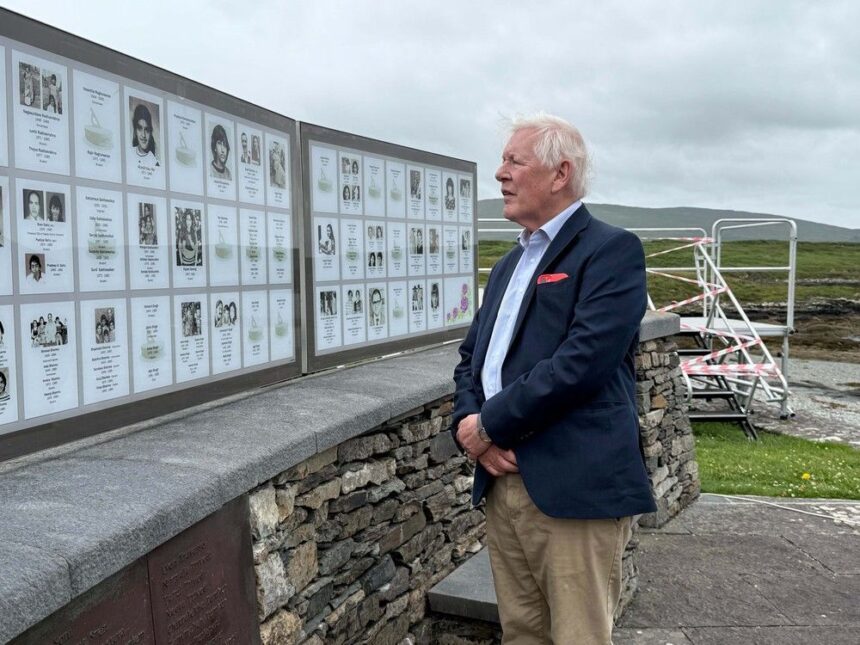I still remember the summer morning in 1985 when the news broke. A quiet Sunday transformed into national heartbreak as 329 lives vanished over the Atlantic Ocean. Air India Flight 182 had fallen from the sky, and with it, hundreds of Canadian stories ended in an instant.
Nearly four decades later, Canada’s UN Ambassador Bob Rae stood before a memorial gathering in Ottawa last week, his voice carrying the weight of what remains Canada’s deadliest terrorist attack. “This wasn’t just a tragedy that happened to ‘those people,'” Rae emphasized. “These were Canadians. This is Canadian history.”
The Air India bombing rarely appears prominently in our collective national memory. Walk through most Canadian history museums or flip through educational textbooks, and you might miss this devastating chapter altogether. As one attendee at the memorial told me, “Sometimes it feels like these lives mattered less because most victims had Indian surnames.”
This painful observation reflects a troubling pattern in how we’ve processed this tragedy. The bombing claimed 280 Canadian citizens, yet for years media coverage and political rhetoric framed it as a “foreign” terrorist attack that happened to touch Canadian soil. The language we use matters, and as Rae pointed out, the narrative around Air India has often excluded these victims from our national story.
“The lessons of this tragedy continue to haunt us,” Rae said, speaking to families who have carried their grief for 38 years while simultaneously fighting for recognition. “When we talk about Canadian tragedies, this must be at the forefront.”
Statistics from the Public Safety Ministry show that public awareness of the Air India bombing sits at roughly 35% among Canadians born after 1990, compared to over 87% recognition of the École Polytechnique massacre. Both were horrific acts of violence that changed countless lives. Both deserve our collective remembrance.
Inderjit Singh Reyat remains the only person convicted in connection with the bombing, serving time for perjury and manslaughter. Justice remained elusive for families who watched the complex investigation falter amid jurisdictional confusion between the RCMP and CSIS – a government failure acknowledged in the 2010 Commission of Inquiry led by former Supreme Court Justice John Major.
“The government failed these families not once, but repeatedly,” said Deepak Khandelwal, who lost his sister and brother-in-law in the bombing. “First in protection, then in investigation, and finally in how we remember them.”
For Susheel Gupta, who was 12 when his mother Ramwati Gupta died aboard Flight 182, the struggle for recognition continues. “When my classmates learned Canadian history, my mother’s murder wasn’t part of the curriculum,” he told me after the memorial. “That sends a message about whose history matters.”
Recent curriculum changes in British Columbia and Ontario now include the Air India bombing in high school history programs. But these changes came only after decades of advocacy from victims’ families who refused to let their loved ones be forgotten.
Rae’s comments reflect a growing recognition that how we define “Canadian” stories matters. When certain tragedies are centered in our national memory while others remain peripheral, we create an implicit hierarchy of belonging. The Air India bombing exposed fault lines in our national security apparatus, but also in our understanding of who counts in the Canadian story.
“We cannot build a truly inclusive country if we are selective about whose pain deserves national remembrance,” said Professor Chandrima Chakraborty, who has extensively documented the cultural memory of the bombing at McMaster University. Her research shows how the initial framing of the attack as “foreign terrorism” has shaped its place in Canadian consciousness.
The families of Air India victims have transformed their grief into powerful advocacy. Their persistence led to the national inquiry, improved aviation security measures, and changes to how intelligence agencies coordinate terrorist threats. Their work continues as they push for fuller inclusion in how Canada understands itself.
During last week’s memorial, attendees placed 329 roses at the monument – one for each life lost. Among them were children and grandchildren of victims, many born years after the attack but carrying its legacy nonetheless. This intergenerational remembrance speaks to how trauma echoes through time when not properly addressed.
“History isn’t just what happened,” Rae noted in his closing remarks. “It’s what we choose to remember, what we teach our children, and how we understand ourselves as a nation.”
As Canada navigates complex questions about national identity and belonging, the Air India bombing offers important lessons. When we fully incorporate this tragedy into our national consciousness – not as an asterisk but as a central chapter – we affirm that Canadian pain isn’t defined by ethnicity or origin, but by our shared humanity.
For the families who gather each June to honor their loved ones, recognition within our national story isn’t just about historical accuracy. It’s about finally coming home in the country they’ve always belonged to.






